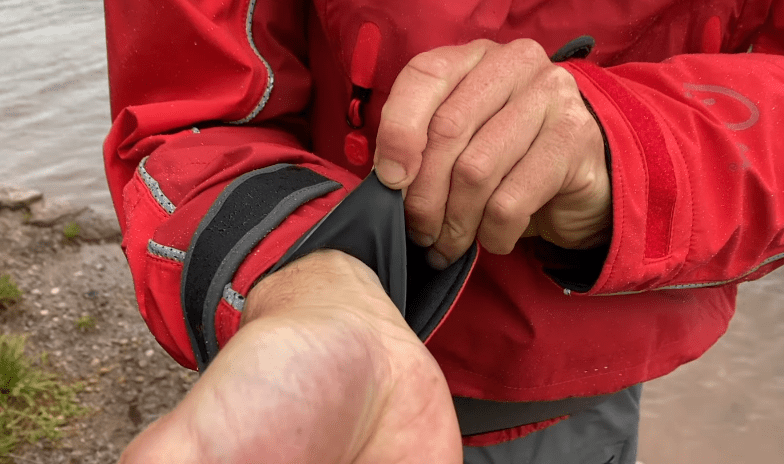Are you wondering what to wear under a drysuit? When it comes to watersports, staying dry and comfortable on the water can make or break your day. Paddling on or diving in cold water requires more than just a drysuit. You’ll also need to wear the right undergarments to keep yourself warm and dry. What you decide to wear underneath your drysuit will directly affect your body temperature and overall diving experience.
Here you can explore different types of undergarments you can wear under your drysuit and how to choose the best one for your needs.
What to Wear Under a Drysuit
Table of Contents
The Role of Drysuit Undergarments
Drysuit undergarments serve a dual purpose: they provide insulation against the cold and help to wick perspiration away from the body. The air that the undergarments trap against your skin is what keeps you warm.
Types of Drysuit Undergarments
Fleece Undergarments
Fleece is a popular drysuit undergarment material because it’s comfortable and insulates very well against the cold. Such undergarments are also easy to layer. You can choose the weight of the fleece material according to the temperature of the water you’ll be traversing.
Thinsulate™ Undergarments
Thinsulate is a synthetic fibre that can retain heat even when wet. It’s less bulky and lighter in weight than fleece, which would make it a good option if you want to minimize bulk without compromising warmth.
Merino Wool Undergarments
Merino wool is another favoured undergarment material because of its breathability and moisture-wicking ability. It’s also not itchy against the skin, as traditional wool is. If you prefer a natural fibre or have sensitive skin, a merino wool undergarment could be the one for you.
Choosing the Right Drysuit Undergarments
When deciding what to wear under a drysuit, you should consider the following factors:
- Water temperature: For colder water, you will need thicker or more layered undergarments.
- Drysuit material: A neoprene drysuit may not need as much insulation as a trilaminate one.
- Activity level: If you’re expecting to be very active in your drysuit, look for undergarments that have good moisture-wicking properties to keep you dry and comfortable.
- Personal comfort: Consider whether you would prefer the cosiness of fleece or the silkiness of Thinsulate, for example.
Whatever drysuit undergarment material you choose to wear, try to avoid using bleach or fabric softeners during your maintenance routine. Some substances could potentially degrade the material’s wicking or insulation properties.

Drysuit vs. Dry Top + Pants
Two popular choices for staying dry are drysuits and the combination of a dry top and dry pants. Let’s explore the pros and cons of each so you can decide which would suit you the best.
What is a Drysuit?
A drysuit is an all-in-one protective garment that covers you from neck to toe. It is designed to keep you completely dry even if you take an unexpected plunge into the water.
Drysuits are made from waterproof, breathable materials and have seals around the neck, wrists and ankles to prevent the entrance of water. Drysuits provide first-rate protection in cold conditions, which makes them a popular choice for winter paddlers and divers. They allow you to layer undergarments, adapting to different temperatures.
The downside is that drysuits can be bulky, can sometimes restrict movement and often come with a higher price tag. They also require diligent maintenance to ensure that the seals and zippers remain in good condition to be effective.
Dry Tops and Dry Pants: On the other hand, the combination of a dry top and dry pants provides flexibility and versatility. A dry top is essentially a waterproof, breathable jacket with seals at the neck and wrists, designed to keep your upper body dry.
Pairing dry tops with dry pants, which have waterproof seals at the waist and ankles, you get a similar level of protection to a drysuit. This combination allows you to mix and match based on prevailing conditions.
For example, on warmer days, when you might only get splashed, you need only to wear the dry top; otherwise, you can combine the two for full immersion protection. The main advantage here is comfort and cost-effectiveness. However, the seal where the dry top meets the dry pants can be a weak point, potentially allowing water to seep in during immersion.
Conclusion
Your choice between a drysuit and the dry top and dry pants combo ultimately depends on your specific needs and activities. If you’re venturing into very cold water or engaging in activities where full immersion is a probability, a drysuit will give you superior protection and warmth. However, if you prefer versatility, comfort and a potentially cheaper option, the dry top and dry pants combination might be the way to go.
Ultimately, each option has its merits. It’s really up to your personal preferences and paddling conditions. Provided that your drysuit gear is well-maintained and fits correctly, it should keep you dry and comfortable when you’re on – or in – the water.
Pin this image on Pinterest:


